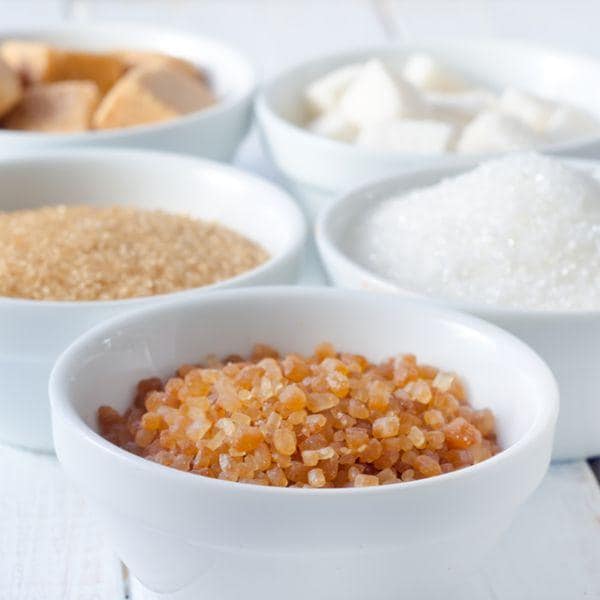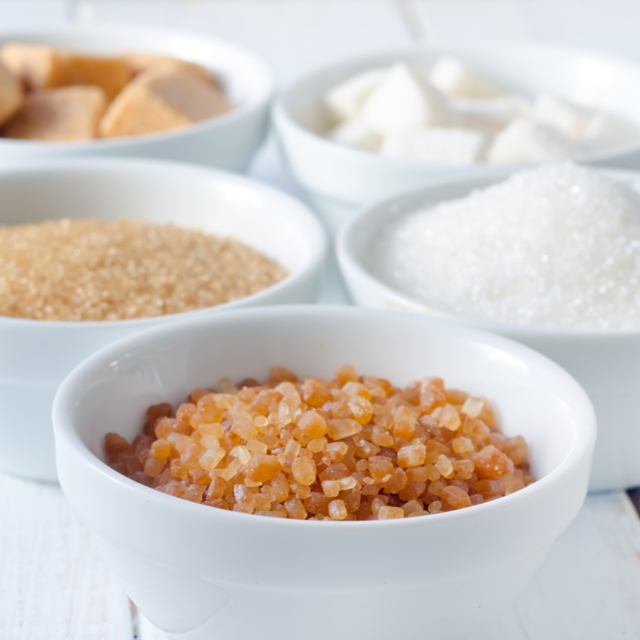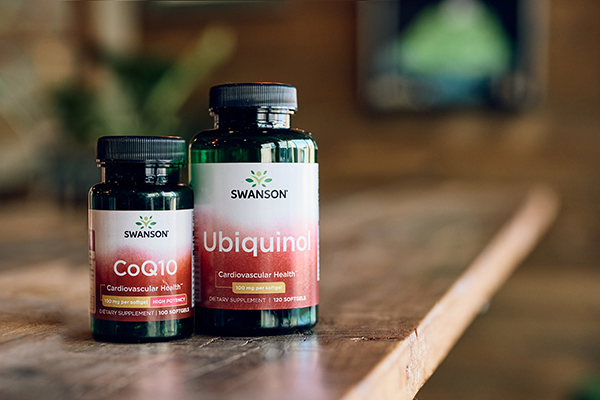How to Replace Sugar with Healthier Alternatives
Most of us know refined sugar isn’t exactly beneficial. It adds empty calories to your diet and has been linked to a host of health issues.1 But resisting sweet foods and beverages can be difficult. After all, sweets are delicious! Plus, added sugars have a way of sneaking into your diet from unexpected places. Just take a look around at nutritional labels and you’ll see. For example, some pasta sauces have as much 9 grams of sugar per serving!
So, what can you do about it? Keep an eye on nutritional labels and eat whole foods when you can. Look for products that have “no added sugar” on the label, and add alternative sweeteners to your pantry.
There are plenty of substitutes for refined sugar that will satisfy any sweet tooth and work perfectly in your recipes—and some are calorie-free! The next time a recipe calls for sugar, try one of these sugar alternatives instead.
Stevia as a Calorie-Free Sugar Replacement
Stevia is unique among calorie-free sugar substitutes. It’s made from the leaves of the stevia plant, which is the Asteraceae family and has been used for centuries by South American cultures. Several species are also native to North America.3
How to Substitute Stevia for Sugar
Despite having no calories, stevia is 200 times sweeter than sugar in the same concentration.3 Stevia is available as both a powder and liquid. Before deciding how to substitute stevia for sugar, read your product label closely. Some stevia sweeteners contain bulking additives to make it easier to use as a substitute, increasing the volume so it can be used in the same measurements as sugar.
In general, stevia that does not include bulking agents can be substituted as 1 teaspoon of stevia per cup of sugar listed in the recipe. For smaller amounts, use just a pinch of stevia for every teaspoon of sugar, and about 1/8 teaspoon of stevia per tablespoon of sugar.
Stevia to Sugar Ratio Chart
| 1 cup of sugar = 1 teaspoon of stevia |
| 1 tablespoon of sugar = 1/8 teaspoon of stevia |
| 1 teaspoon of sugar = a pinch of stevia |
Try it in Swanson Organic Stevia Extract.
Xylitol Sugar Replacement
Xylitol is a sugar alcohol from plant sources with 40% fewer calories than sugar. And unlike sugar, studies show that it may actually provide some health benefits, including improved dental health and increased calcium absorption.4 You’ll often see xylitol as an ingredient in mouthwash to make it taste sweeter without adding sugar, and for the potential dental benefits.
How to Substitute Xylitol for Sugar
Xylitol is similar in sweetness to sugar and can be substituted at a 1:1 ratio, but many people find that they don’t need quite as much xylitol as sugar.5 Start with ½ cup of xylitol for every cup of sugar, ½ teaspoon for every teaspoon of sugar, and ½ tablespoon for every tablespoon of sugar, and do a taste test to see if you need more.5
If you have a dog, make sure your dog doesn’t ingest xylitol or any food you cook with it because it’s highly toxic for dogs.
Xylitol to Sugar Ratio Chart
| 1 cup of sugar = ½ cup of xylitol |
| 1 tablespoon of sugar = ½ tablespoon of xylitol |
| 1 teaspoon of sugar = ½ teaspoon of xylitol |
Get quality xylitol at a great value in our 100% Pure Non-GMO Xylitol Granules.
Erythritol Sugar Substitute
Like xylitol, erythritol is also a sugar alcohol, but it contains fewer calories than xylitol.4 It also has only 6% of the calories of sugar and tastes almost identical to sugar.4 The body can’t break down erythritol, so most of it passes through the body without entering the bloodstream. 4
Substituting Erythritol for Sugar
Erythritol can be used as a substitution for sugar at a 1:1 ratio. Some people prefer to use a little more since it’s about 70% less sweet than sugar but start with a 1:1 ratio and add more only if needed. Erythritol doesn’t dissolve as well as sugar, so if you’re baking cookies or sweets, look for erythritol that has been finely ground like confectioner’s sugar.
Erythritol to Sugar Ratio Chart
| 1 cup of sugar = 1 cup of erythritol |
| 1 tablespoon of sugar = 1 tablespoon of erythritol |
| 1 teaspoon of sugar = 1 teaspoon of erythritol |
Try it in Swanson Healthy Foods 100% Pure Erythritol or Swerve Sweetener, an erythritol blend that substitutes at a 1:1 ratio with sugar for cooking and baking.
Monk Fruit as a Sugar Replacement
Monk fruit is a gourd-like melon native to Southeast Asia.6 Extracts from the fruit are used to make monk fruit sweetener, also known as Lo Han Sweetener, which is popular because it has no carbs, calories, sodium or fat.6 Studies have shown that monk fruit sweetener is low-glycemic and may also help reduce oxidative stress. 6
How to Replace Sugar with Monk Fruit
Monk Fruit sweeteners are available in both liquid and powder form. Because monk fruit is significantly sweeter than sugar, most monk fruit sweeteners contain additional ingredients to make substituting easier. Always read the product label to be sure, but in general, powdered forms of monk fruit sweetener are formulated so it can be substituted at a 1:1 ratio with sugar.
Monk fruit sweeteners dissolve best at room temperature. If you want to add it to cold drinks, liquid monk fruit may be a better option, but substitution ratios may vary depending on the formula. Instructions should be listed on your product label.
Powdered Monk Fruit to Ratio Chart
Read your label to be sure, but for most powders use these ratios:
| 1 cup of sugar = 1 cup of monk fruit sweetener |
| 1 tablespoon of sugar = 1 tablespoon of monk fruit sweetener |
| 1 teaspoon of sugar = 1 teaspoon of monk fruit sweetener |
Coconut Sugar as a Sugar AlternativeMonk fruit is one of our favorite sugar substitutes—try Swanson Premium PureLo Lo Han Sweetener.
Coconut sugar has about the same amount of calories as regular sugar, but this sugar alternative has a lower glycemic index and contains small amounts of some nutrients, including fiber, iron, zinc, calcium, potassium and antioxidants.4 Coconut sugar is still high in fructose, so don’t overindulge, but if you’re looking for an alternative to refined white sugar, coconut sugar may be an option.
How to Substitute Coconut Sugar for Regular Sugar
Coconut sugar can replace refined sugar at a ratio of 1:1 in all your recipes. Coconut sugar is brown in color and will make your recipes brown. If you’re making something that needs to remain white, it may not be the best option. Otherwise, enjoy this tasty sugar alternative!
Coconut Sugar to Ratio Chart
| 1 cup of sugar = 1 cup of coconut sugar |
| 1 tablespoon of sugar = 1 tablespoon of coconut sugar |
| 1 teaspoon of sugar = 1 teaspoon of coconut sugar |
Looking for a great coconut sugar to try? Big Tree Farms makes a great organic brown coconut sugar.
Raw, Organic Honey to Replace Sugar
Honey is not calorie-free but it does have a lower glycemic index than sugar, meaning it doesn’t raise blood sugar levels as quickly.2 Honey also contains more nutrients, including amino acids, antioxidants, vitamins and minerals.
How to Substitute Honey for Sugar
Honey is sweeter than sugar, so you typically need to use less. When adding honey to beverages, just go slowly and taste test along the way to make sure you don’t overdo it. If you’re replacing sugar in a recipe, use ¾ cup of honey for every cup of sugar listed in the recipe, ¾ tablespoon of honey for every 1 tablespoon of sugar, or ¾ teaspoon of honey for every 1 teaspoon of sugar.
Also, if you’re using it as a substitute in baked goods—decrease the liquid in your recipe by 2-4 tablespoons, add a pinch of baking soda, and reduce the oven temperature by 25 degrees.
Honey to Ratio Chart
| 1 cup of sugar = ¾ cup of honey |
| 1 tablespoon of sugar = ¾ tablespoon of honey |
| 1 teaspoon of sugar = ¾ teaspoon of honey |
| Note: Decrease the liquid in your recipe by 2-4 tablespoons, add a pinch of baking soda, and reduce the oven temperature by 25 degrees. |
Looking for the best organic, raw honey to use as a sugar replacement? Try Swanson’s Certified Organic Raw Wildflower Honey.
Maple Syrup Sugar Replacement
The unique flavor of maple syrup may limit some substitutions, but it’s still a viable option and tastes amazing in many baked goods. Maple syrup does contain calories and its glycemic index is only slightly lower than sugar, but it also contains minerals, including calcium, potassium, iron, zinc and manganese and at least 24 different antioxidants.4
How to Use Maple Syrup to Replace Sugar
Substitute at a ratio of ¾ cup of maple syrup for every cup of sugar listed in the recipe. For smaller amounts, substitute ¾ tablespoon of maples syrup for each tablespoon of sugar, or ¾ teaspoon for each teaspoon of sugar. When baking with maple syrup instead of sugar, reduce liquid in the recipe by 3 tablespoons and add ¼ teaspoon of baking soda for every cup of syrup you add. Plus, decrease the oven temperature by 25 degrees.
Maple Syrup to Ratio Chart
| 1 cup of sugar = ¾ cup of maple syrup |
| 1 tablespoon of sugar = ¾ tablespoon of maple syrup |
| 1 teaspoon of sugar = ¾ teaspoon of maple syrup |
| Note: Reduce liquid in the recipe by 3 tablespoons and add ¼ teaspoon of baking soda for every cup of syrup you add. Plus, decrease the oven temperature by 25 degrees. |
If you’re using maple syrup as a sugar replacement often, you’ll want to get a larger container. Try NOW Foods 64 ounce bottle of organic maple syrup.
Replacing Sugar in Recipes
There are plenty of options when it comes to replacing processed, refined white table sugar in your diet. Experiment with the options above to find the substitution that best complements your recipes and your taste preferences. Give Mother Nature a chance to showcase her natural sweetness and we’re sure you’ll something you love!
What’s your favorite sugar substitute? Tell us in the comments below. Also, check out these 5 Scary Good Taco Hacks and 18 Food Replacement Hacks that Make Healthy Eating Easy.

About Lindsey Toth, MS, RD
Lindsey is a nationally recognized registered dietitian and nutritionist with a soft spot for ice cream. She empowers people to take charge of their health by finding the balance between the pleasure and nourishment in food. Her philosophy is that you should take care of your body because it’s the only permanent home you have. It’s what inspired her to pursue a career in nutrition.
*These statements have not been evaluated by the Food and Drug Administration. These products are not intended to diagnose, treat, cure, or prevent any disease.
Sources
1 11 Reasons Why Too Much Sugar Is Bad for You. Healthline. https://www.healthline.com/nutrition/too-much-sugar
2 Is honey better for you than sugar? Medical News Today. https://www.medicalnewstoday.com/articles/317728.php
3 What is Stevia? Live Science. https://www.livescience.com/39601-stevia-facts-safety.html
4 8 Natural Substitutes for Sugar. Healthline. https://www.healthline.com/nutrition/natural-sugar-substitutes
5 Places You Should Substitute Xylitol Sweeteners for Sugar. Xylitol.org https://xylitol.org/places-substitute-xylitol-sweeteners-sugar/
6 Monk Fruit vs. Stevia: Which Sweetener Should You Use? Healthline. https://www.healthline.com/health/food-nutrition/monk-fruit-vs-stevia




